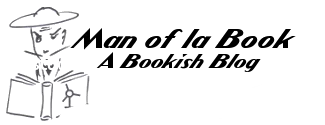I read and enjoyed Land of Hidden Fires by Kirk Kjeldsen very much. At first I had trepidation about reading it, but I’m very glad I read the novel. Mr. Kjeldsen was kind enough to answer a few questions for me.
Q. How did you prepare to tell the story of Kari, a teenage girl?
A.I didn’t intend to write the novel with a teenage girl as the protagonist; I first wanted to write about the story of my great-grandfather’s brother, Anfinn Kjeldsen, who helped a downed American pilot get to Sweden during WWII. I couldn’t find enough details, though, and trying to tell what had happened with what little that I had wasn’t working for me, so I put it aside for a few years. I eventually tried it again as fiction, making the protagonist a young man about Anfinn’s age, and it started coming easier. Then I thought it might be more interesting if the main character was a teenage boy, and then a teenage girl, and the story took off. So the character sort of wrote herself, in a way, which I think all good characters do.
I didn’t consciously or specifically prepare writing the story of a teenage girl, though I did read Hanna Aasvik Helmersen’s War and Innocence: A Young Girl’s Life in Occupied Norway and the unpublished memoirs of Ola Ljødal, who was about Kari’s age during WWII. I also have a young daughter and three nieces, and I teach teenagers, so I spend time around young women, for what that’s worth.
Q. Besides family history, did you do any other research of how people in Norway were under Nazi occupation?
A.I read a lot; in addition to the books mentioned above, I’m indebted to Hans Christian Adamson’s Blood on the Midnight Sun, Sigurd Evensmo’s A Boat For England, William F. Fuller and Jack Haines’ Reckless Courage: The True Story of a Norwegian Boy Under Nazi Rule, Odd Nansen’s From Day To Day, and Gunnar Sønsteby’s Report from #24. I also read non-fiction about farming techniques, culture, and dress from that time, wildlife and plant life from the area, and other subjects. I talked to as many Norwegians from that generation that I could. I also spent time in Norway going to the places that I ended up using in the novel; there are still many reminders of the war there, such as the German bunkers that stand along the Skagerrak coast.
Q. here do you draw the line of where history ends and fiction begins?
A.That’s a great question and very relevant in this era of “fake news.” Susan Sontag wrote about this in a 2002 article from The New Yorkercalled “Looking at War,” and particularly about the Civil War photographer Matthew Brady, whose photographs chronicled the war:
“The camera is the eye of history,” Brady is supposed to have said… But the frankness of the most memorable pictures in an album of photographs by Gardner and other Brady photographers, which Gardner published after the war, did not mean that he and his colleagues had necessarily photographed their subjects as they found them…
The picture titled “The Home of a Rebel Sharpshooter, Gettysburg” in fact shows a dead Confederate soldier who was moved from where he had fallen on the field to a more photogenic site, a cove formed by several boulders flanking a barricade of rocks, and includes a prop rifle that Gardner leaned against the barricade beside the corpse.”
All history is subjective to whatever the one writing or photographing it leaves in and takes out, and how he or she shows what he or she chooses to show. The line of where history ends and fiction begins is grey; so much of what we know as history is fiction or at least very subjective. That’s one of the reasons I prefer to write fiction rather than non-fiction; it searches for an emotional truth, which I’m much more interested in, anyway, rather than a factual one, which I’m not even sure is possible.
Q. What are the challenges of book promotions in the social media age?
A.So many books come out every week, so whatever promotions one does have to vie with all the noise that’s out there. Most people tune out promotions these days, anyway, so targeted sharing of one’s work seems to be far more effective, and this is a challenge because doing this is actual work that requires time, research, and creativity, and not just money, which is already a limited resource for small and independent publishers.
Some promotion is necessary, but I’d rather focus on writing the next story than promoting the latest one. Maybe it’s naïve, but I think if you write a good story and put it out there, an audience will eventually find it.
Shameless plug disguised as a wise ass question: Why do you love ManOfLaBook.com so much and often visit the website?
Wise-guy Answer:Over the years, I’ve discovered many lesser-known WWII books through your Amazon reviews and your ManOfLaBook.com site. I love reading something like James Jones’ The Thin Red Line or Anthony Doerr’s All the Light We Cannot See, but I also love finding something like Lafe Metz’s The Locksmith or Steve Sem-Sandberg’s The Emperor of Lies, which I probably wouldn’t have found if it weren’t for ManOfLaBook.com.

No Comments